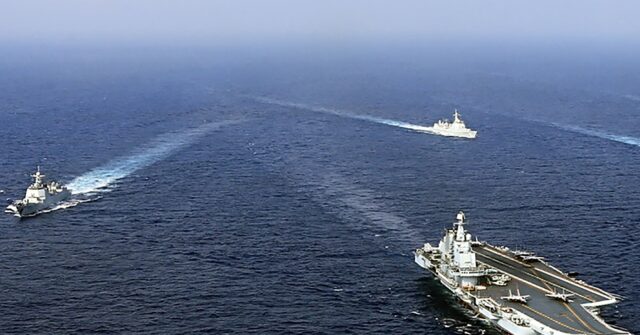In a significant display of military strength, Chinese land, sea, air, and rocket forces conducted extensive joint exercises around Taiwan on Monday, which the People’s Liberation Army (PLA) termed “Joint Sword-2024B.” This operation was described as a “stern warning” directed at what Beijing perceives as the separatist activities of forces advocating for Taiwan’s independence. The military exercises follow a previous show of force—Joint Sword-2024A—initiated after the inauguration of Taiwan’s President William Lai Ching-te in May. According to the PLA, these exercises serve as a legitimate measure to uphold state sovereignty and reinforce national unity, echoing a broader narrative within China regarding their territorial claims over Taiwan.
The PLA’s military maneuvers appeared to be a direct reaction to President Lai’s recent National Day speech, where he emphasized his administration’s commitment to maintaining Taiwan’s sovereignty against potential encroachments by the People’s Republic of China (PRC). While presenting his points diplomatically, Lai asserted the importance of preserving peace and stability across the Taiwan Strait and expressed a willingness to cooperate with Beijing on shared challenges like climate change and public health issues. Nonetheless, he stood firm on safeguarding the autonomy of the Republic of China (ROC), making pointed remarks about the historical context of both governments, which he argued reinforced Taiwan’s status and legitimacy.
Lai’s comments, particularly those referencing Taiwan’s National Day as the anniversary of the ROC’s founding in 1911, were likely to provoke ire from Beijing, which maintains that the PRC is the rightful government of all of China, including Taiwan. His additional suggestion that the PRC should focus on territorial claims with Russia over issues stemming from historical treaties only further aggravated tensions. In the face of Lai’s assertive stance, Beijing has increasingly characterized him as an “intransigent” figure, amplifying accusations that his government is seeking to heighten tensions in the Strait for political leverage.
The Chinese Foreign Ministry responded vehemently to Lai’s speech, emphasizing that statements from his administration cannot alter the reality of the supposed unity of the two sides of the Taiwan Strait under one China. Beijing’s belligerent rhetoric signifies a broader commitment to the idea of reunification, and the notion that military force could be a tool in pursuit of this aim was reiterated by defense officials, who remain staunchly opposed to any moves towards Taiwan’s independence. The ongoing military exercises were framed as both a message of deterrence and a reaffirmation of intentions, with calls for dialogue coexisting alongside threats of force.
The military exercises integrated substantial naval drills, including the deployment of the Liaoning aircraft carrier group observed near Taiwanese waters. The PLA warned of simulations involving combat scenarios that included air confrontations, naval blockades, and possible amphibious assaults targeting critical territory in Taiwan. Taiwanese officials monitored these developments closely, emphasizing their readiness to respond and asserting their military’s capabilities in intelligence gathering and surveillance of Chinese activities. The presence of the Liaoning carrier—a vessel with a controversial history—represents an attempt by China to project power, despite the carrier’s relative age and limitations compared to the nation’s more advanced naval assets.
Furthermore, discussions about the operational state of China’s naval forces highlighted a notable contrast among its carriers. The Liaoning is viewed as the least capable, while newer vessels like the domestically produced Shandong and the increasingly sophisticated Fujian may bolster China’s maritime strength. Analysts express concern over the potential advancements seen in the Fujian, particularly its electromagnetic catapult technology, which could enhance China’s naval combat capabilities. As the Fujian continues its sea trials, it signals a forward movement in China’s naval ambitions, leaving open questions regarding its impact on regional stability and the ongoing military posturing surrounding Taiwan. The current situation thus not only underlines the complexities of cross-strait relations but also reflects an evolving and precarious military dynamic in the Indo-Pacific region.

